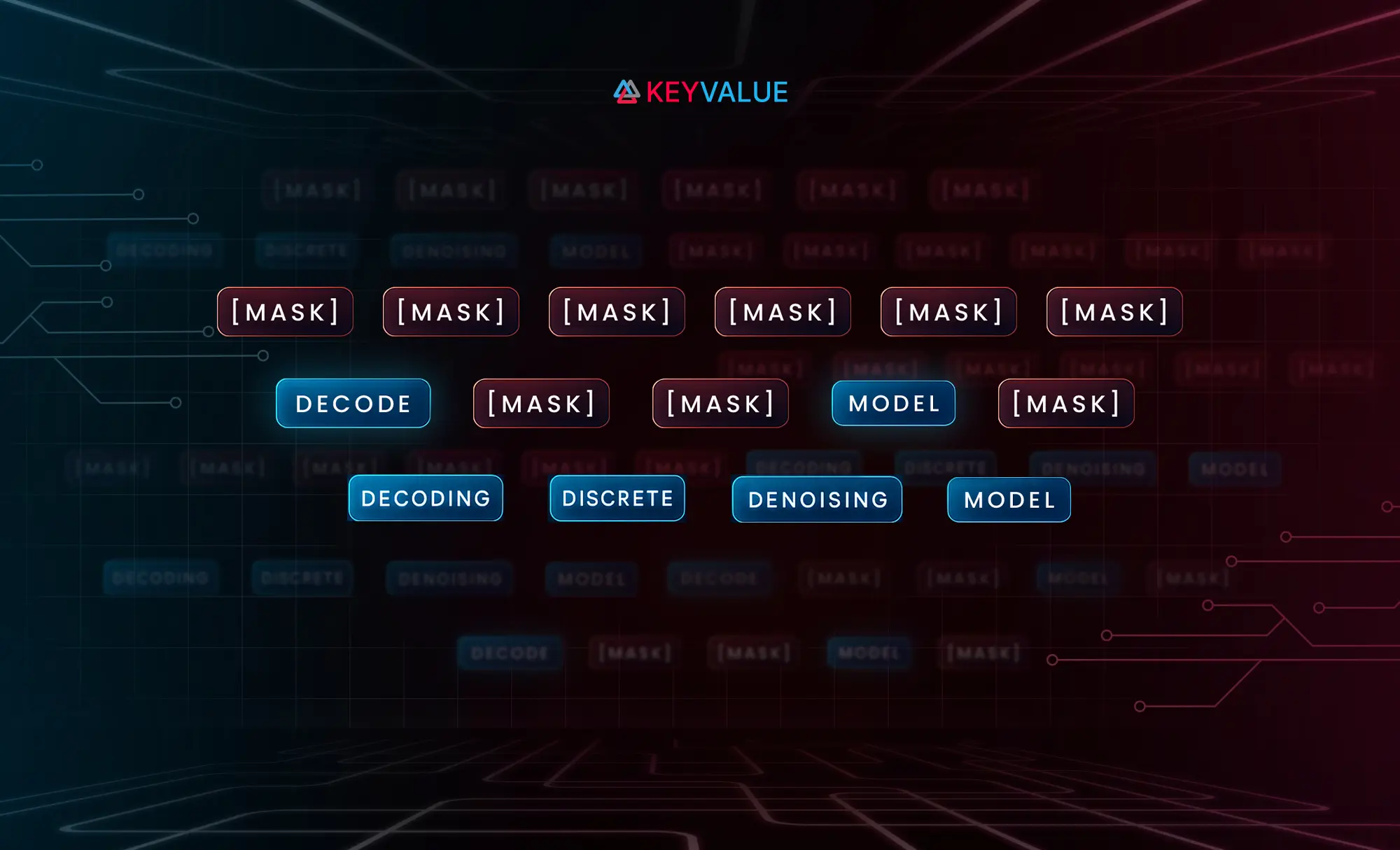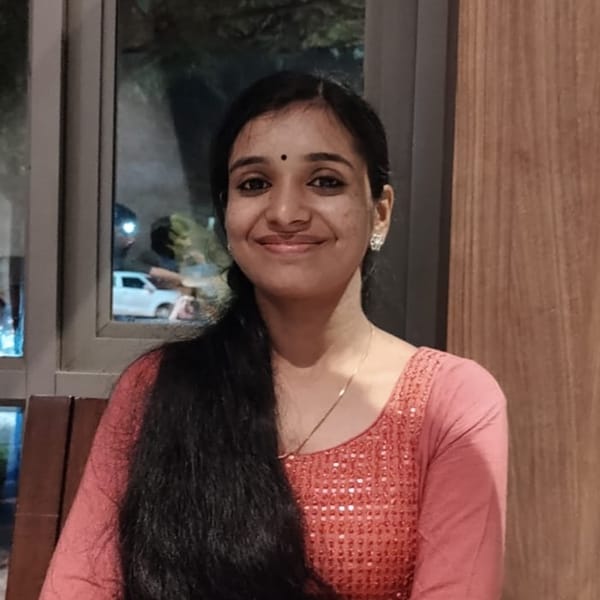
Highlights
- Diffusion LLMs replace left-to-right token prediction with an iterative mask-and-denoise process, enabling richer bidirectional context integration.
- The ddm-sft method adapts pretrained autoregressive weights using discrete diffusion denoising objectives, LoRA adapters, and target-aware masking for efficient adaptation.
- Data preparation incorporates noise schedules, timestep embeddings, and annealed attention masks to simulate diffusion steps effectively.
- This approach yields robust, production-grade LLMs by blending autoregressive foundations with diffusion-style denoising to power domain-specific applications such as medical QA.
As diffusion-based large language models (LLMs) surge into mainstream AI, understanding their fine-tuning intricacies is vital for pushing state-of-the-art frontiers. In decoding Discrete Denoising Model-supervised Fine-tuning, we train an already adapted diffusion LLM on labeled pairs using a mask‑and‑denoise objective with full or bidirectional attention, rather than autoregressive next‑token prediction. Let's now dive deeper into the real mechanics of fine-tuning a diffusion model.
Training paradigm: Autoregressive vs. diffusion LLMs
Traditional autoregressive LLMs generate language token-by-token left-to-right, conditioning each prediction only on previous tokens using causal masking. This sequential process simplifies likelihood maximization but faces potential pitfalls such as exposure bias and error accumulation during generation.
Conversely, diffusion LLMs see generation as an iterative denoising problem: starting from noisy corrupted sequences, the model learns to recover original text through multiple bidirectional attention-enabled denoising steps. This paradigm fundamentally shifts away from sequential token predictions to a denoising framework capable of richer, more flexible context integration.
Diffusion supervised fine-tuning combines mask-and-denoise training, full/bidirectional attention, and specialized loss on masked tokens only—unlike autoregressive SFT, which uses left-to-right causal masks and next-token prediction everywhere. In ddm-sft, only target-side tokens are masked to protect the source/prompt, and training executes a single forward pass per batch with random continuous time t. Inference works via an iterative denoising loop across the masked sequence, not stepwise left-to-right decoding.
To get an in-depth overview of how diffusion LLMs work, read our blog.
ddm-sft: How to fine-tune diffusion models
Fine-tuning diffusion models combines pretrained autoregressive weights with diffusion-specific adaptation. Training involves:
- Corrupting inputs at varied diffusion timesteps by adding noise or masking tokens.
- Learning to reconstruct original sequences stepwise from these noisy inputs.
- Utilizing LoRA adapters for lightweight parameter-efficient fine-tuning.
- Employing hyperparameters like anneal_steps (attention mask transition smoothness) and shift (token alignment facilitation) to stabilize learning.
Data preparation for diffusion LLMs: Crucial differences
Autoregressive models need simply tokenized sequences with shifted inputs for next-token labels. Diffusion LLMs require more complex preparation:
- Samples are processed to simulate noisy diffusion timesteps.
- Training data includes noise schedules and timestep embeddings.
- Attention masks gradually transition or switch (annealed) from causal to full.
- Batch collators dynamically create noisy inputs and targets per diffusion logic.
This richer data preparation supports the model’s denoising learning and empowers it with increased robustness and bidirectional understanding.
To conclude: Fine-tune diffusion LLMs beyond theory for real-world reliability
In sum, ddm-sft fine-tuning realizes diffusion LLMs’ potential by blending autoregressive initialization with novel denoising training mechanics, pivoting from single-step prediction to multistep conditional reconstruction. This intricate pipeline necessitates tailored data handling and hyperparameter tuning — challenges we navigated to unlock powerful medical question-answering capabilities in diffusion LLMs.
This blog sets the stage for exploring our applied experience in fine-tuning diffusion models on custom data using our NVIDIA L40S GPU cluster, which we’ll detail in our next blog.
At KeyValue, engineering reliable AI isn’t theory, it’s what we do. Build what’s next with us. Let’s connect.
FAQs
- What is a diffusion LLM?
A diffusion LLM is a large language model that treats text generation as an iterative denoising process—starting from corrupted or masked text and progressively reconstructing it through multiple refinement steps. This approach allows richer, bidirectional context understanding compared to traditional next-token prediction.
- What sets diffusion LLMs apart from traditional autoregressive models?
Diffusion LLMs generate text through iterative denoising rather than step-by-step next-token prediction. This bidirectional process enables richer context integration, reducing exposure bias and improving output stability.
- What is Discrete Denoising Model-supervised Fine-tuning (ddm-sft)?
ddm-sft is a fine-tuning method for diffusion LLMs that replaces next-token prediction with a mask-and-denoise objective, training models to reconstruct masked sequences for more accurate and context-aware responses.
- How does fine-tuning diffusion LLMs differ from standard supervised fine-tuning?
Unlike autoregressive SFT, which uses causal masking, diffusion fine-tuning employs full or bidirectional attention, noisy timestep simulation, and denoising objectives—requiring specialized data handling and training logic.
- Why is data preparation more complex for diffusion LLMs?
Diffusion LLMs rely on noise schedules, timestep embeddings, and dynamic attention masks. This structure teaches the model to recover clean text from noise, making it more robust and generalizable in production settings.
- What advantages does ddm-sft bring to real-world AI applications?
By focusing on denoising and context fidelity, ddm-sft reduces hallucinations, enhances reliability, and enables domain-specific systems—such as medical Q&A models—to perform consistently in real-world environments.

